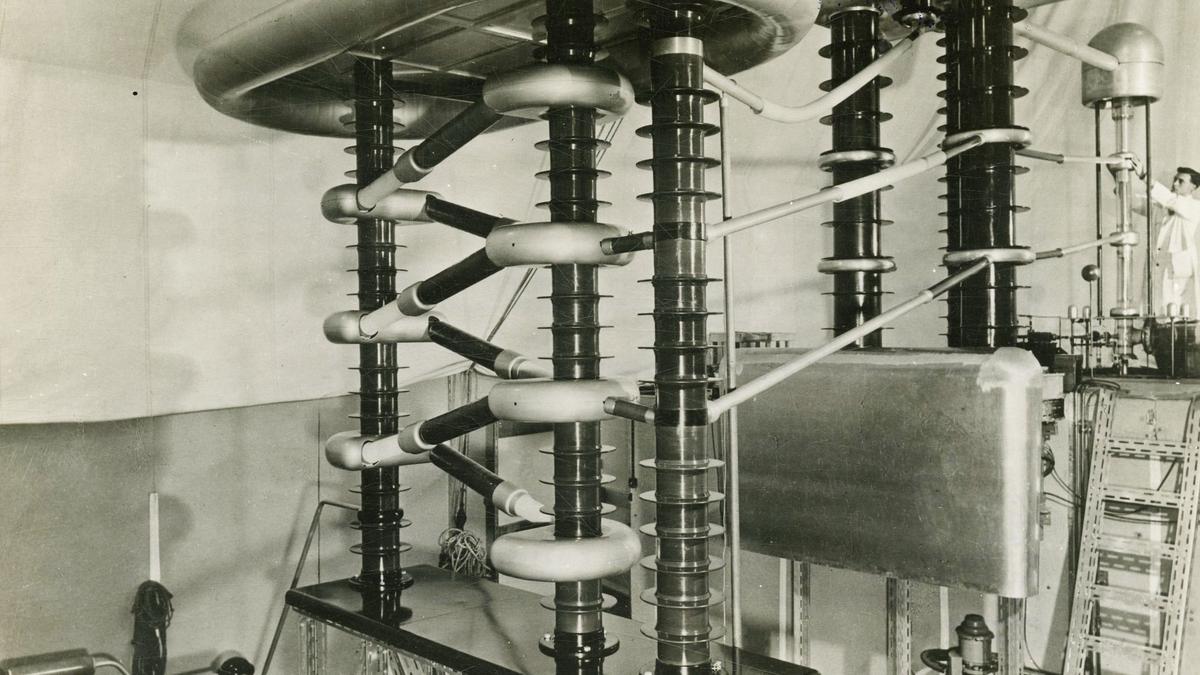
The men who first split the atom
The Hindu
April 14, 1932 was a day that transformed subatomic physics forever as a lithium atom was split using a proton beam. A.S.Ganesh tells you more about the first accelerator-based physics experiment, along with insights about the two men who made it possible…
Did you know that the word “atom” originates from the Greek word “atomos”? The Greek word means uncuttable or indivisible and the choice of the word comes more from philosophical concepts than from scientific studies.
Atoms, as you might well have studied in school, comprise subatomic particles. The first nuclear transmutation of one element (lithium) to another (helium) under complete human control was achieved by physicists John Cockcroft and Ernest Walton on April 14, 1932.
Born on May 27, 1897, Cockcroft came from a family of cotton manufacturers in Todmorden in northern England. He went through a varied educational experience, which put him in good stead for what lay ahead in his life.
Before World War I, he studied mathematics at Manchester University in 1914-15. After serving with the Royal Field Artillery during the war, he returned to Manchester – not to continue studying mathematics, but to pursue electrical engineering at the College of Technology. He joined the Metropolitan Vickers (“Metrovick”) Electrical Company for two years as an apprentice, before heading over to St John’s College, Cambridge, to take his Mathematical Tripos in 1924.
In addition to the wide-ranging skill training – seen now as a prerequisite for modern accelerator science and engineering – Cockcroft’s theoretical know-how in mathematics, physics, and engineering, along with practical experience with a local electrical company put him on the right track. When he rejoined renowned New Zealand physicist Ernest Rutherford – with whom he had previously apprenticed in Manchester – at the Cavendish Laboratory, all the ingredients for Cockcroft’s most important contribution were in place.
Following his success in April 1932, Cockcroft went on to head the Magnet Laboratory in Cambridge in 1934. He worked on radar systems for defence in 1939 and became the director of the Chalk River Laboratory in Canada in 1944. When he was back in the U.K. two years later, he was made the inaugural director of the Atomic Energy Research Establishment (AERE), Harwell, playing a pivotal role in ensuring operational success of the world’s first commercial nuclear power station at Windscale.
In addition to holding many powerful and influential positions, both scientific and administrative, Cockcroft’s work was also acknowledged in many ways, including honorary memberships and doctorates from various academies. He died on September 18, 1967, aged 70.

 Run 3 Space | Play Space Running Game
Run 3 Space | Play Space Running Game Traffic Jam 3D | Online Racing Game
Traffic Jam 3D | Online Racing Game Duck Hunt | Play Old Classic Game
Duck Hunt | Play Old Classic Game











